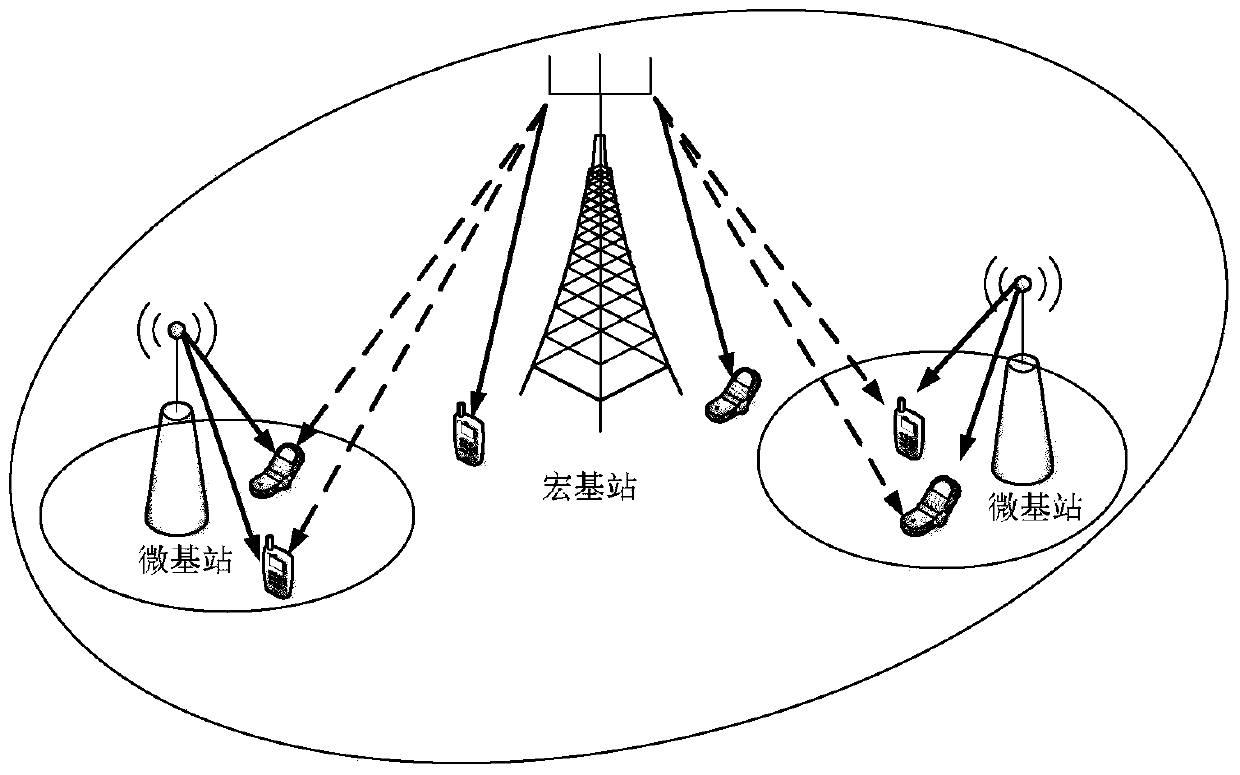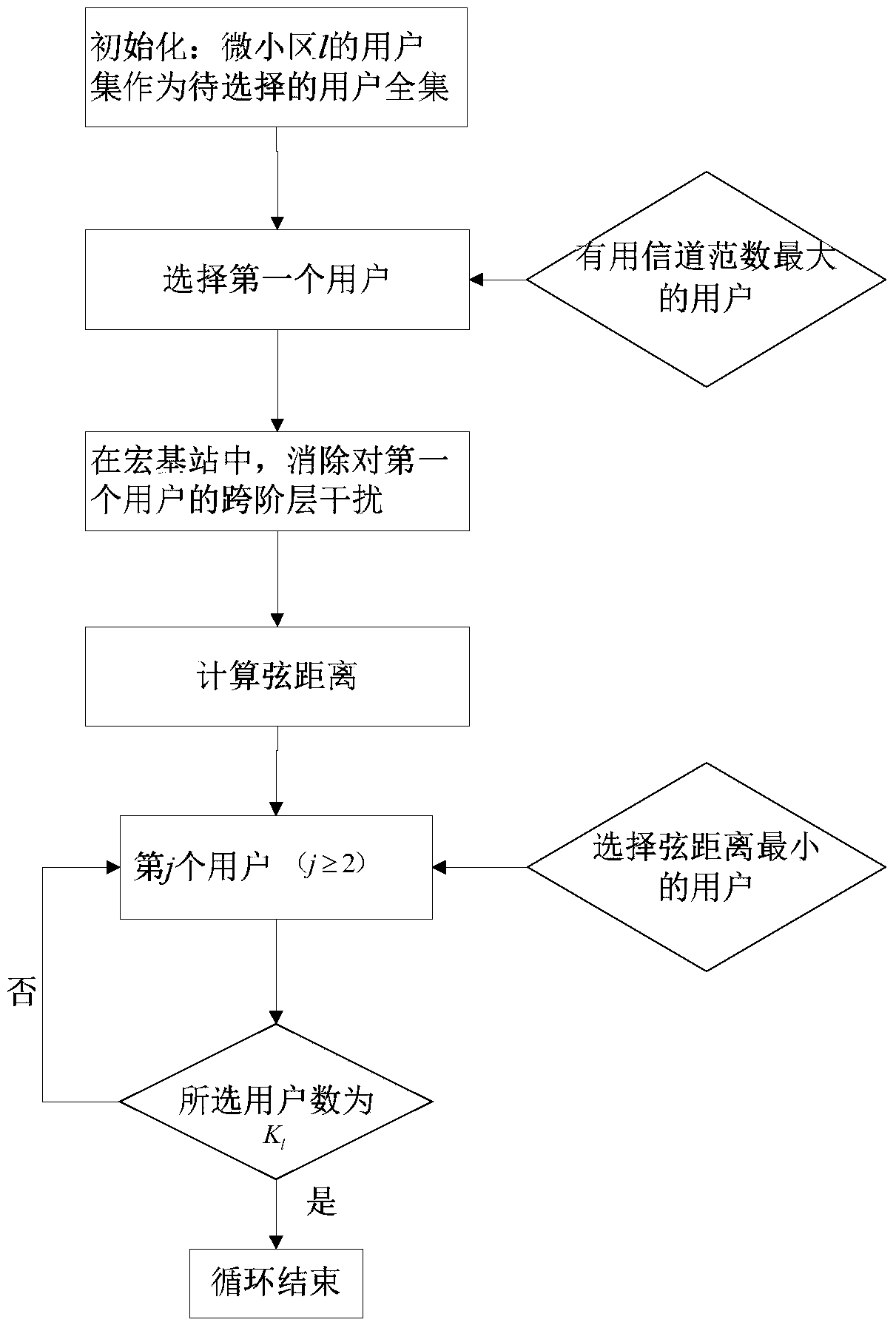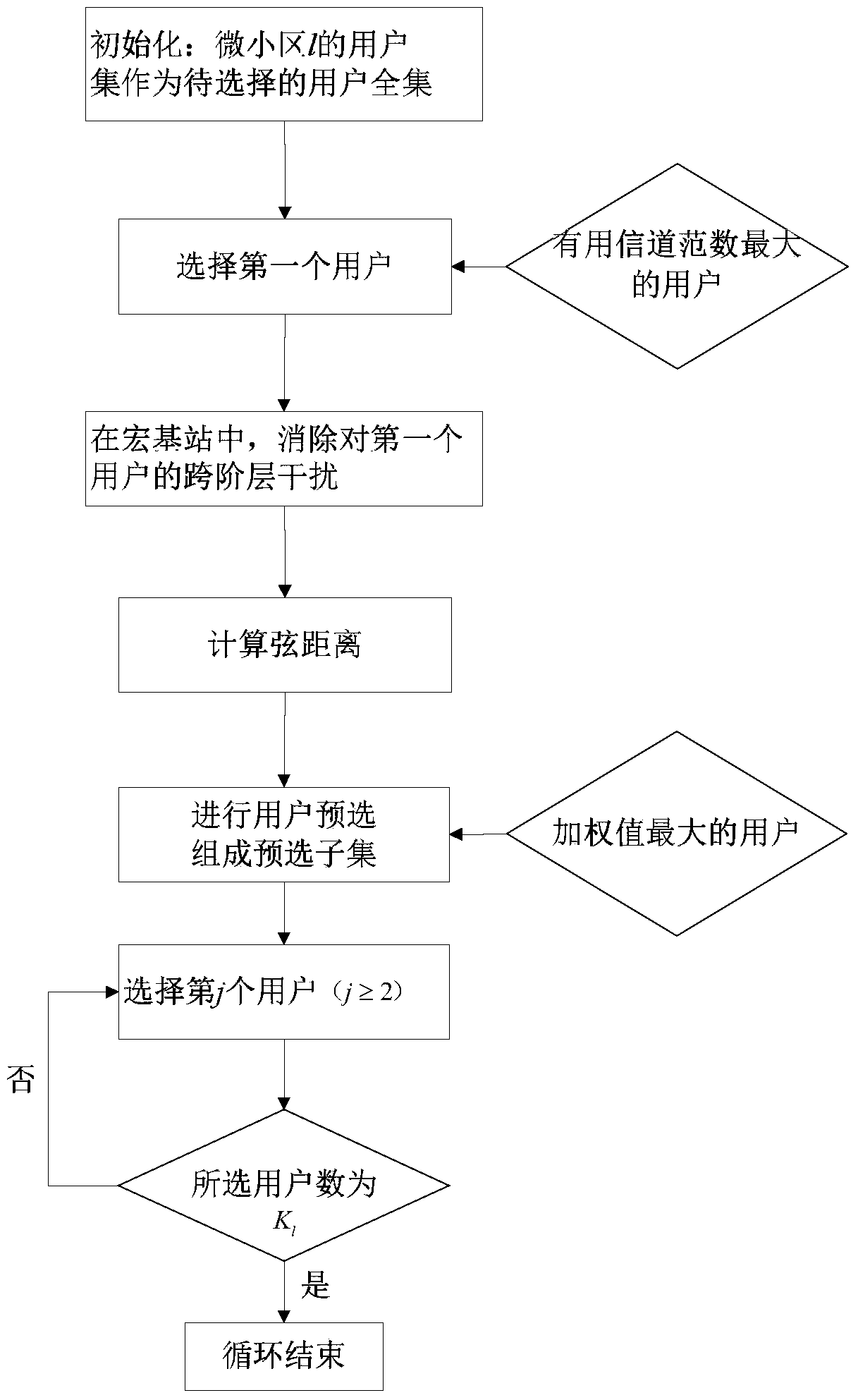A User Selection Algorithm Used in Heterogeneous Networks
A heterogeneous network and user technology, applied in the field of heterogeneous networks, can solve problems such as the limitation of the number of users, the inability to obtain the capacity gain of the MIMO system, and the lack of consideration of channel quality information, etc., and achieve the effect of reducing cross-class interference and optimizing cross-class interference
- Summary
- Abstract
- Description
- Claims
- Application Information
AI Technical Summary
Problems solved by technology
Method used
Image
Examples
Embodiment Construction
[0048] The technical solutions of the present invention will be further described in detail below in conjunction with the accompanying drawings and embodiments.
[0049] Such as figure 1 The heterogeneous wireless network system shown includes a macro base station and L micro base stations, and the macro base station serves K M users, the micro base station serves K in the micro cell l users, K M The number of users serving the macro cell for the macro base station, K l is the number of users in the micro cell that the micro base station can serve; K represents the number of users to be selected for each micro base station; the macro base station configures N M transmit antennas, each micro base station is configured with N P transmit antennas, each user configures N U receiving antennas; assuming that the micro base stations are isolated from each other (isolated pico-cells), that is, the interference between the micro cells can be ignored; and because the power of the m...
PUM
 Login to View More
Login to View More Abstract
Description
Claims
Application Information
 Login to View More
Login to View More - R&D
- Intellectual Property
- Life Sciences
- Materials
- Tech Scout
- Unparalleled Data Quality
- Higher Quality Content
- 60% Fewer Hallucinations
Browse by: Latest US Patents, China's latest patents, Technical Efficacy Thesaurus, Application Domain, Technology Topic, Popular Technical Reports.
© 2025 PatSnap. All rights reserved.Legal|Privacy policy|Modern Slavery Act Transparency Statement|Sitemap|About US| Contact US: help@patsnap.com



